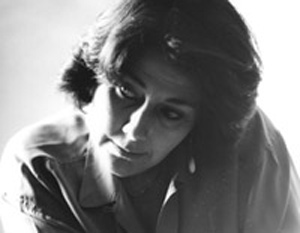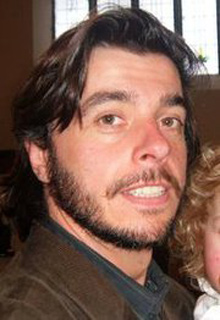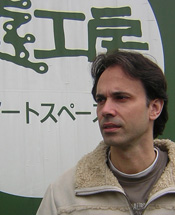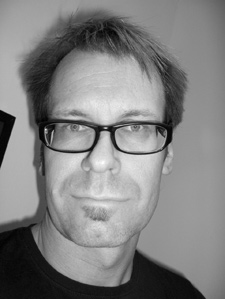Posted by viktor on fredag, april 8, 2011 · Leave a Comment
Around the world of EAM (Electro-Acoustic Music)
This concert is an appetizer and a sampler of the exciting soundworlds that are created within the international community of electroacoustic music. We will move around in an ingenious sound archipelago, float into new imaginary landscapes on soothing waves for the ear.
Sound system: 8 x1031 genelec + 2 Sub Meyers
Programme:
• Peterloo – Mark Pilkington
• Si je les écoutais… – Christine Groult
• Decipher – Thomas Bjewlkeborn
• Papyrus – Diana Salazar
• Havanna – Ricardo Climent
Curators: Ricardo Climent & Thomas Bjelkeborn
_________________________________________________________________________________________
Peterloo (2011) Mark Pilkington dur 14’00
A 5.1 acoustmatic piece based on the historic event that happened in Manchester UK in 1819. The piece is a sonic reflection of the events that unfolded on that fateful day in August. A peaceful social protest of 60,000 people gathered at St. Peters field Manchester to represent to the nation that ordinary people had the right and ability to discuss social reform issues in public. A political standpoint for citizenship, that would inspire a change that would give people the right to vote for political change. Unfortunately what transpired was a miscarriage of justice in which the local authority ordered troops to disperse the crowd resulting in the Peterloo Massacre in which 15 people lost their lives and 300 people were injured. The piece is in-respect to the people who died on that day and the effects it had on changing the face of political balance within the UK as we know it today. With the help of historian Robert Poole, University of Cumbria and the Peoples Museum Manchester, I have managed to acquire historical factual information in order to accurately convey the sound events as they happened. The sonic material are transformations of recordings made at the recent students protest that happened in Manchester 2011.
_________________________________________________________________________________________
Si je les écoutais… (2007) Christine Goult dur 18’00
Electroacoustic music a mode of expression, ”cette forme de composition élabore en studio une matière sonore créatrice d’images porteuses de sens, de liens. Proche des arts plastiques dont elle rejoint la culture de la matière et de l’espace, elle se prête à la construction de formes inédites, seule, ou dans une interdisciplinarité active avec toutes les pratiques artistiques en recherche. Sa diffusion sur orchestre de hauts parleurs lui permet d’investir des lieux très variés pour y réaliser in situ de véritables spectacles sonore ” (Collective KM Pantin)
For Christine Groult electroacoustic music is lika a musical scenography where she offers the audience the possibility of new imaginary places. Elements from our everyday world, sociological, historical, geographical and architectural is brought together in her music to establish another reality. As if the visible was a testimony of the Invisible that contains it.
_________________________________________________________________________________________
Decipher (2006) Thomas Bjelkeborn dur 7’43
It slips out of hand, lives a life of its own,
can’t get hold of it, even if all were put on one
it rips apart, shows what’s inside
violently closes, leaves all
on the inside, it lingers on
until left to rest
This music is performed by an octet of trompaphones and an quartet of swischers. It was written for the anniversary and celebration of 50 years with Chilean Electro-acoustic Music and first performed at the Ai-Maako festival 2006. It was commisioned by Comunidad Electroacoustica de Chile, CECH.
_________________________________________________________________________________________
Papyrus (2010) Diana Salazar dur 8’32
Almost all source material in Papyrus is derived from recordings of a variety of paper, from notepaper to large sheets of wallpaper. I recorded much of this material during the creation of a soundtrack for a theatre production of The Yellow Wallpaper, based on the novel by Charlotte Perkins Gilman. A site-specific production of the theatre adaptation was directed by Rob Drummer and performed at the Manchester Museum in May 2008. While composing the soundtrack I was fascinated by the intricate sonic details present in the closely recorded paper and was keen to explore their potential further in a standalone acousmatic concert work. As a result, Papyrus explores the wide variety of spatial motions, trajectories and perspectives which can be created through the manipulation of this seemingly simple and lifeless material. Through the course of the work the sounds of paper gather energy and they form increasingly animated behaviours within a changing abstract landscape. There are four sections, each one seemingly revealed through a metaphorical ‘tearing’ of the wallpaper. This work exists independently of the theatre soundtrack. However the transformations in this piece reflect the behaviour of the woman behind the wallpaper in the novel: a development from hypnotic creeping in the shadows to ‘mechanical and ugly movements’ in a ‘twisting and twisted dance.
_________________________________________________________________________________________
Havanna (2011) Ricardo Climent dur 11’00
Les séries sonores 50
“I wanted to capture a sound-snap of Cuba before the Castro Era was over and all went sonically global; the engines of the remaining Buicks, the old Italian buses, etc. I was hoping to write a soundscape composition with them… but all went wrong and I could not. Although I got my recordings, they had an impact on me as never before. I was moved, they made me sad and confused, thoughtful and furious. I could neither remain impartial nor find my political side any longer.”
_________________________________________________________________________________________

Christine Groult started as a composer of music for concert, theater, choreography and documentaries. She has more and more entered her work in the search for an expressive electroacoustic music that addresses emotion. It is the poetic potential of sound (recording and processing) and the search for a new sound dramaturgy that is her particular concern.
She is teaching electroacoustic composition at the CRD Pantin. In 2007, the dynamics of the classroom has led to the creation of the association KM Pantin. Initiated by students, this group aims to encourage the creation and dissemination of electroacoustic music and create a real platform for exchange of knowledge within that community.

Diana Salazar (née Simpson) initially studied flute performance at the RSAMD (Royal Scottish Academy of Music and Drama) in Glasgow, where she was first introduced to studio composition by Alistair MacDonald. She went on to specialise in electroacoustic composition, later completing a PhD at the University of Manchester, UK. She is currently a lecturer at Kingston University, London.
Her works have been performed throughout the UK and internationally, across Europe and in South, Central and North America. They have also been recognised in a number of international competitions, including CIMESP, Bourges, L’Espace du Son, Música Viva and SCRIME.
She has been a composer-in-residence at CEMI (Center for Experimental Music and Intermedia at the University of North Texas, Atlantic Center for the Arts in Florida, the Institute for Electroacoustic Music in Sweden (EMS), Orford Center for the Arts, Montreal and the Destellos Foundation, Argentina.
Mark Pilkington is a performer, composer and lecturer in electronic and electroacoustic music. PhD. candidate at the University Of Manchester UK – NOVARS. MA in electroacoustic composition, the University of Huddersfield in the UK 2004. He is interested in fusing together digital audio/visual structures that can be manipulated from a score or improvised in real-time thus presenting performances that question traditional concepts of art, music and technology. Experimental filming-maker and visual artist. http://thought-universe.co.uk - http://novars.org
Ricardo Climent works in areas of music composition and interactive media, involving the use of audio and visual metadata. Currently, he serves as Co-Director of the NOVARS Research Centre, University of Manchester and he previously held a Lecturing position at SARC, Queen’s University of Belfast. Ricardo has also served as resident composer and researcher at the JOGV Orchestra in Spain, Conservatorio of Morelia in Mexico, Sonology – Kunitachi College of Music, Tokyo, LEA labs, at the Conservatorio of Valencia, the Cushendall Tower- In you we trust, Northern Ireland, at CARA- Celebrating Arts in rural Areas, cross-border Ireland and N.K. Berlin. He was involved in the creation of a number of collaborative projects, such as, The Microbial Ensemble, (repertoire for a bunch of microbes, with Quan Gan), The Carxofa Electric Band (a children’s project using vegetables and Electronics with iain McCurdy), The Tornado-Project (a cross-atlantic set of commissioned works for flute, clarinet and computer for American wind virtuosi Esther Lamneck (clarinet) and Elizabeth McNutt (flute)), Drosophila (a dance-theatre tour of a blind fly with KLEM and Idoia Zabaleta), Ho- a sonic expedition to Vietnam, (a 3D interactive interface project for planetariums), project manager for S.LOW, (a cross-disciplinary project in Berlin) and Manchester Sonic meta-ontology (Audioguides in collaboration with Mantis and NoTours among others) sonorities.org
Thomas Bjelkeborn has been active in electronic music in sweden since late seventies. In 1984 he started studying and working at the Studio for Electro-acoustic Music, EMS in Stockholm. His produktion involves electro-acoustic compositions, music for choreography, computer works, live-electronics in the ensemble Sound Quartet and interactive artinstallations as the Cyberfon. In sweden he is well known for his large scale works such as The ballet for Excavaters for the Stockholm Museum of Modern Art and Touchdown event for swedens largest rock festival. Thomas Bjelkeborn is the founder for the Institute for Digital Arts, IDKA in Gävle, Sweden and was the director between 2000-2005. From 2006 he is artistic director for festivals and konserts and manages all international contacts for the PUSH festival.
All around the world.





